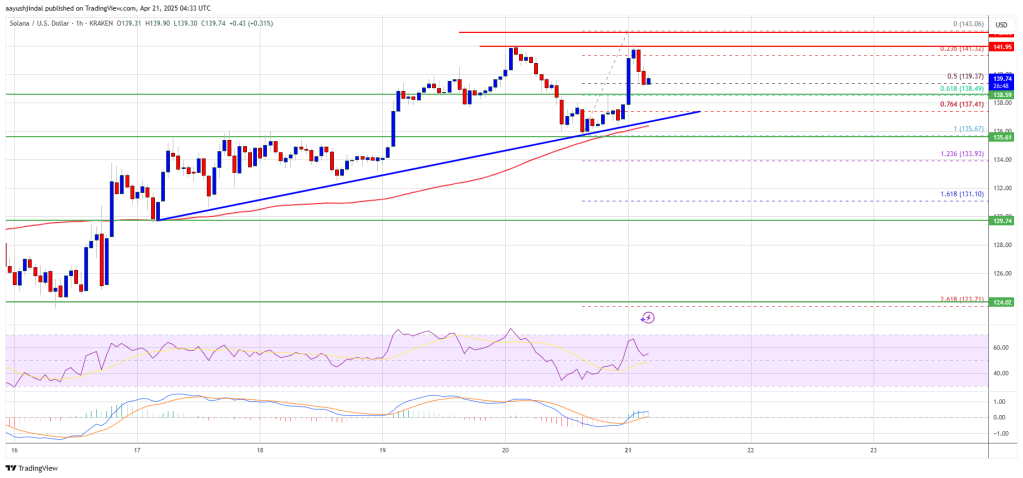Market
The rise of neo-banking and its role in banking the underbanked


Emerging nations are the fastest growing regions in crypto adoption and the growing presence of neo-banks plays the biggest role in this growth. Could these innovative platforms be the solution to financial inequalities and the lack of adequate banking services for over one billion people?
As Satoshi once remarked in his now-stopped social messages, “Bitcoin would be convenient for people who don’t have a credit card or don’t want to use the cards they have”. Emerging nations whether in Africa, Latin America or South East Asia could resonate more truly to this statement than others. Over the past half-decade, the growth of neo-banks in developing countries has caused a revolutionary change in how the populous interact in their economies and a radical change in their financial systems.
Crucially, the billions of unbanked and underbanked are finally integrated into the global financial systems, despite the lack of efficient banking structures in their respective nations.
This article will break down how cryptocurrency is benefiting the unbanked (and underbanked) and the role neo-banks play in providing financial services to countries with little hope of having a stable banking infrastructure. The piece further looks at the role developing countries play in growing the crypto ecosystem and various technological advancements in the industry as a result of rapid adoption across Sub-Saharan Africa, Latin America and Southeast Asia regions.
Financial Inequality in Underserved Economies
According to World Bank reports, over 1.2 billion people across the world are either unbanked or underbanked. Developing countries remain the most affected nations with over 50% of the population having little to no access to solid banking infrastructure or basic financial services such as loaning facilities, savings accounts, etc.
The advent of blockchain technology and cryptocurrencies sparked a drastic change in the global financial system, providing previously unavailable financial systems to citizens of these nations. The emergence of this decentralized industry is becoming a force in the global financial landscape, redefining traditional currency, transactions, and financial systems.
Cryptocurrencies, powered by blockchain technology and cryptographic principles, are opening up the financial world to developing nations, allowing previously unbanked and underbanked citizens to participate in the financial ecosystem. These assets have opened up new avenues to transact and store value by giving everyone access to fast and low-cost digital cash that can be spent anywhere.
The Rise of Neo-Banks and Decentralized Finance (DeFi)
The global financial crisis in 2008 brought rise to several innovations in the industry, majorly the growth of neo-banking. Neo-banks refer to financial technology firms that are redefining how banking services are delivered to consumers, from seamless digital experiences to lower transaction fees and accessibility via smartphones, etc.
The most prominent form of neo-banking arose in Kenya, with the launch of M-Pesa, a mobile-based financial service that allowed anyone with a SIM card and a phone to send and receive money. Over the years, such innovations have evolved into formidable players in the financial sector, as they revolutionize traditional banking and financial services.
Recently, decentralized finance (DeFi) apps have come to the fore, providing digital and decentralized alternatives that offer personalised user-centric services that resonate with crypto-savvy consumers. Notwithstanding, crypto exchange apps have sprouted rapidly offering anyone across the world an opportunity to access cryptocurrencies directly on their smartphones. These apps ensure advanced security measures, and seamless integration of fintech solutions, setting them apart from traditional finance services.
As such, developed countries have been able to join the global financial systems, signifying a paradigm shift in the transformative power of crypto for the modern consumer.
Crypto Exchanges May Challenge The Status Quo
As alluded to, crypto exchanges are diversifying to wider markets, moving from simple on-ramp and off-ramping business models to becoming neo-banks and challenging the traditional finance system – global, low-cost and very accessible to the unbanked. Crypto adoption is becoming more prominent for the 1.2 billion and financial services and products are more sophisticated and accessible. Could this pose a threat to the traditional banking systems?
The jury is still out on that but the solutions provided by these “decentralized neo-banks” are having a great effect on emerging nations’ economies – financial inclusion, low-cost remittance fees, and fast and secure transactions have driven the growth of crypto in these economies.
Boxwind, a digital asset exchange platform set to launch later in the year, brings these solutions to the 1.2 billion who need such services. From trading to lending, saving, trading, and a channel to affordably transfer crypto cryptocurrencies into and around emerging economies. The exchange is designed with advanced functionalities for new and experienced investors, providing spot and derivatives trading of over 300+ digital assets, on-ramp and off-ramp solutions, staking services, borrowing/lending and much more.
The platform also features its brainchild, PIP World, a service that aims to empower users via Edutech programs, gamified trading, and AI-powered gaming. PIP Trader, one of the gamefied and educative platforms, allows users to team up, battle in trading games, and earn rewards on an AI-powered game.
Looking Ahead
Chainalysis’ 2023 Crypto Report showed that over 40% of the world’s cryptocurrency users reside in lower-middle-income countries (LMICs), with the number growing every year. This impressive growth is heavily influenced by CEXs and the vast services they offer. Regulated crypto exchanges could be the main driver of sustained adoption rates by facilitating neo-banking services to the underbanked.
Crypto adoption in emerging economies presents a unique opportunity to empower individuals, enhance skills and financial literacy, and provide solutions to financial inequalities. For the industry to really grow, however, several things must be put in place including setting up secure platforms, regulatory compliance, users’ funds protection, easily accessible platforms, and educating the masses on the technology.
Market
XRP Bulls Defend $2.00—Is a Fresh Price Surge Loading?

Aayush Jindal, a luminary in the world of financial markets, whose expertise spans over 15 illustrious years in the realms of Forex and cryptocurrency trading. Renowned for his unparalleled proficiency in providing technical analysis, Aayush is a trusted advisor and senior market expert to investors worldwide, guiding them through the intricate landscapes of modern finance with his keen insights and astute chart analysis.
From a young age, Aayush exhibited a natural aptitude for deciphering complex systems and unraveling patterns. Fueled by an insatiable curiosity for understanding market dynamics, he embarked on a journey that would lead him to become one of the foremost authorities in the fields of Forex and crypto trading. With a meticulous eye for detail and an unwavering commitment to excellence, Aayush honed his craft over the years, mastering the art of technical analysis and chart interpretation.
As a software engineer, Aayush harnesses the power of technology to optimize trading strategies and develop innovative solutions for navigating the volatile waters of financial markets. His background in software engineering has equipped him with a unique skill set, enabling him to leverage cutting-edge tools and algorithms to gain a competitive edge in an ever-evolving landscape.
In addition to his roles in finance and technology, Aayush serves as the director of a prestigious IT company, where he spearheads initiatives aimed at driving digital innovation and transformation. Under his visionary leadership, the company has flourished, cementing its position as a leader in the tech industry and paving the way for groundbreaking advancements in software development and IT solutions.
Despite his demanding professional commitments, Aayush is a firm believer in the importance of work-life balance. An avid traveler and adventurer, he finds solace in exploring new destinations, immersing himself in different cultures, and forging lasting memories along the way. Whether he’s trekking through the Himalayas, diving in the azure waters of the Maldives, or experiencing the vibrant energy of bustling metropolises, Aayush embraces every opportunity to broaden his horizons and create unforgettable experiences.
Aayush’s journey to success is marked by a relentless pursuit of excellence and a steadfast commitment to continuous learning and growth. His academic achievements are a testament to his dedication and passion for excellence, having completed his software engineering with honors and excelling in every department.
At his core, Aayush is driven by a profound passion for analyzing markets and uncovering profitable opportunities amidst volatility. Whether he’s poring over price charts, identifying key support and resistance levels, or providing insightful analysis to his clients and followers, Aayush’s unwavering dedication to his craft sets him apart as a true industry leader and a beacon of inspiration to aspiring traders around the globe.
In a world where uncertainty reigns supreme, Aayush Jindal stands as a guiding light, illuminating the path to financial success with his unparalleled expertise, unwavering integrity, and boundless enthusiasm for the markets.
Market
Vitalik Buterin Proposes to Replace EVM with RISC-V

Ethereum (ETH) co-founder Vitalik Buterin has proposed overhauling the blockchain’s smart contract infrastructure by replacing the Ethereum Virtual Machine (EVM) with RISC-V, a widely adopted open-source instruction set architecture.
This shift aims to address one of Ethereum’s key scaling bottlenecks by dramatically improving the efficiency and simplicity of smart contract execution.
Buterin Proposes Ditching EVM for RISC-V
The proposal was detailed in a post on the Ethereum Magicians forum. In it, Buterin suggested that smart contracts could eventually be compiled to RISC-V rather than EVM bytecode.
According to Buterin, this shift addresses long-term scalability challenges. This particularly includes keeping block production competitive and improving zero-knowledge (ZK) EVM-proof efficiency.
“It aims to greatly improve the efficiency of the Ethereum execution layer, resolving one of the primary scaling bottlenecks, and can also greatly improve the execution layer’s simplicity – in fact, it is perhaps the only way to do so,” he wrote.
Current ZK-EVM implementations spend around half of their proving cycles on EVM execution. By switching to a native RISC-V VM, Ethereum could potentially achieve up to 100x efficiency gains.
Importantly, many fundamental aspects of Ethereum’s architecture would remain unchanged, preserving continuity for developers and users. Core abstractions such as accounts, smart contract storage, ETH balances, and cross-contract calls would function exactly as they do today.
Developers would still write contracts in familiar languages like Solidity or Vyper. These would simply be compiled to RISC-V rather than EVM bytecode. Tooling and workflows would remain largely intact, ensuring a smooth transition.
Crucially, the proposal ensures backward compatibility. Existing EVM contracts will remain fully operational and interoperable with new RISC-V contracts.
Buterin outlines several potential implementation paths forward. The first would support both EVM and RISC-V smart contracts natively. The second suggests wrapping EVM contracts to run via an interpreter written in RISC-V. Thus, it would enable a full transition without breaking compatibility.
The third, more modular approach, builds on the second by formally enshrining interpreters as part of the Ethereum protocol. This would allow the EVM and the future virtual machines to be supported in a standardized way.
Buterin stated that the idea is “equally as ambitious as the beam chain effort.”
“The beam chain effort holds great promise for greatly simplifying the consensus layer of Ethereum. But for the execution layer to see similar gains, this kind of radical change may be the only viable path,” Buterin added.
For context, the Ethereum Beam Chain is a redesign of Ethereum’s consensus layer (Beacon Chain). It focuses on faster block times, faster finality, chain snarkification, and quantum resistance. The development will likely begin in 2026.
This proposal fits into Ethereum’s broader vision of modularity, simplicity, and long-term scalability. Previously, BeInCrypto reported on Buterin’s privacy-centric plans for the blockchain.
The proposal focused on integrating privacy-preserving technologies. Moreover, the Pectra upgrade is also nearing, with the launch expected on May 7.
Meanwhile, ETH continues to face market headwinds, trading at March 2023 lows. This year has been quite hard for the altcoin, as it saw a decline of 50.8%. In fact, Ethereum dominance hit a 5-year low last week.

Nonetheless, BeInCrypto data showed a slight recovery over the last 14 days. ETH rose by 6.1%. Over the past day alone, it saw modest gains of 1.7%. At the time of writing, ETH was trading at $1,639.
Disclaimer
In adherence to the Trust Project guidelines, BeInCrypto is committed to unbiased, transparent reporting. This news article aims to provide accurate, timely information. However, readers are advised to verify facts independently and consult with a professional before making any decisions based on this content. Please note that our Terms and Conditions, Privacy Policy, and Disclaimers have been updated.
Market
Solana Rallies Past Bitcoin—Momentum Tilts In Favor of SOL

Solana started a fresh increase from the $120 support zone. SOL price is now consolidating and might climb further above the $142 resistance zone.
- SOL price started a fresh increase above the $125 and $132 levels against the US Dollar.
- The price is now trading above $130 and the 100-hourly simple moving average.
- There is a connecting bullish trend line forming with support at $137 on the hourly chart of the SOL/USD pair (data source from Kraken).
- The pair could start a fresh increase if it clears the $142 resistance zone.
Solana Price Gains Over 5%
Solana price formed a base above the $120 support and started a fresh increase, like Bitcoin and Ethereum. SOL gained pace for a move above the $125 and $132 resistance levels.
The pair even spiked toward the $145 resistance zone. A high was formed at $143.06 and the price is now retreating lower. There was a move below the 23.6% Fib retracement level of the upward move from the $135 swing low to the $143 high.
Solana is now trading above $130 and the 100-hourly simple moving average. There is also a connecting bullish trend line forming with support at $137 on the hourly chart of the SOL/USD pair. The trend line is close to the 76.4% Fib retracement level of the upward move from the $135 swing low to the $143 high.
On the upside, the price is facing resistance near the $142 level. The next major resistance is near the $145 level. The main resistance could be $150. A successful close above the $150 resistance zone could set the pace for another steady increase. The next key resistance is $155. Any more gains might send the price toward the $165 level.
Pullback in SOL?
If SOL fails to rise above the $142 resistance, it could start another decline. Initial support on the downside is near the $138.50 zone. The first major support is near the $137 level and the trend line.
A break below the $137 level might send the price toward the $132 zone. If there is a close below the $132 support, the price could decline toward the $125 support in the near term.
Technical Indicators
Hourly MACD – The MACD for SOL/USD is gaining pace in the bullish zone.
Hourly Hours RSI (Relative Strength Index) – The RSI for SOL/USD is above the 50 level.
Major Support Levels – $137 and $132.
Major Resistance Levels – $142 and $145.
-

 Market16 hours ago
Market16 hours ago1 Year After Bitcoin Halving: What’s Different This Time?
-

 Ethereum23 hours ago
Ethereum23 hours agoEthereum Consolidates In Symmetrical Triangle: Expert Predicts 17% Price Move
-

 Market20 hours ago
Market20 hours agoMELANIA Crashes to All-Time Low Amid Insiders Continued Sales
-

 Market22 hours ago
Market22 hours agoToday’s $1K XRP Bag May Become Tomorrow’s Jackpot, Crypto Founder Says
-

 Market21 hours ago
Market21 hours agoCharles Schwab Plans Spot Crypto Trading Rollout in 2026
-

 Ethereum22 hours ago
Ethereum22 hours agoEthereum Enters Historic Buy Zone As Price Dips Below Key Level – Insights
-

 Market17 hours ago
Market17 hours agoVOXEL Climbs 200% After Suspected Bitget Bot Glitch
-

 Market12 hours ago
Market12 hours agoWill XRP Break Support and Drop Below $2?
























